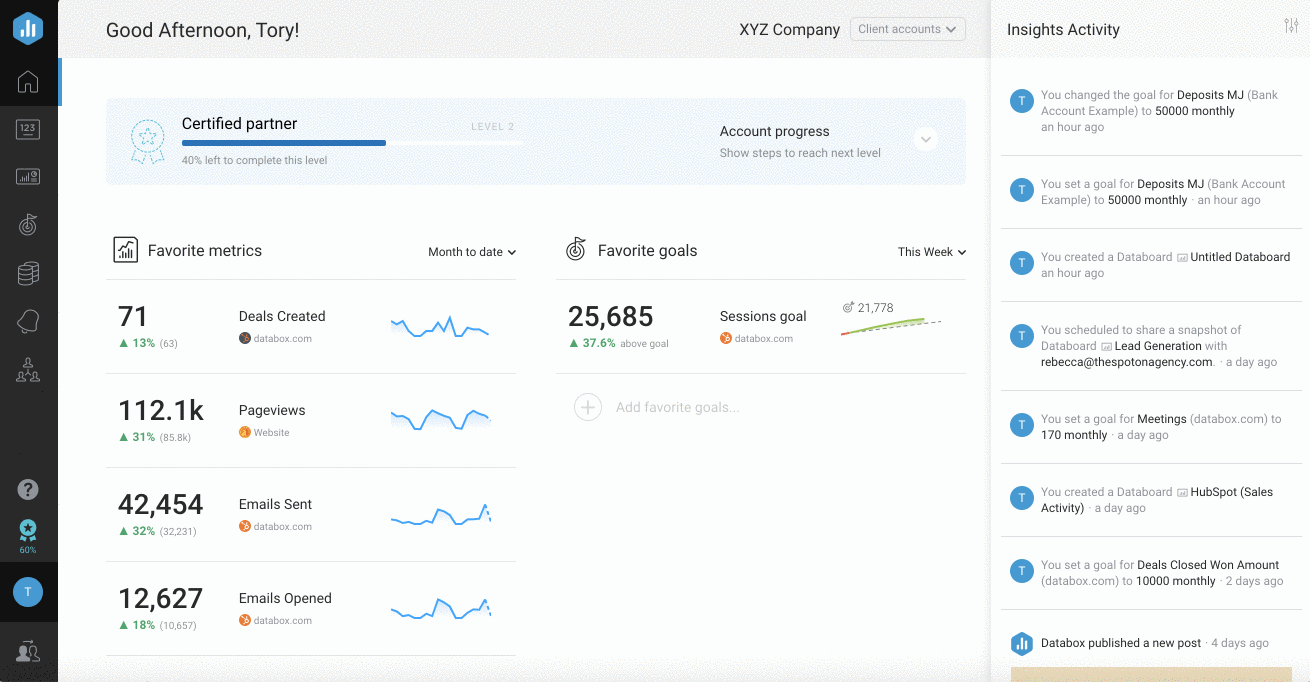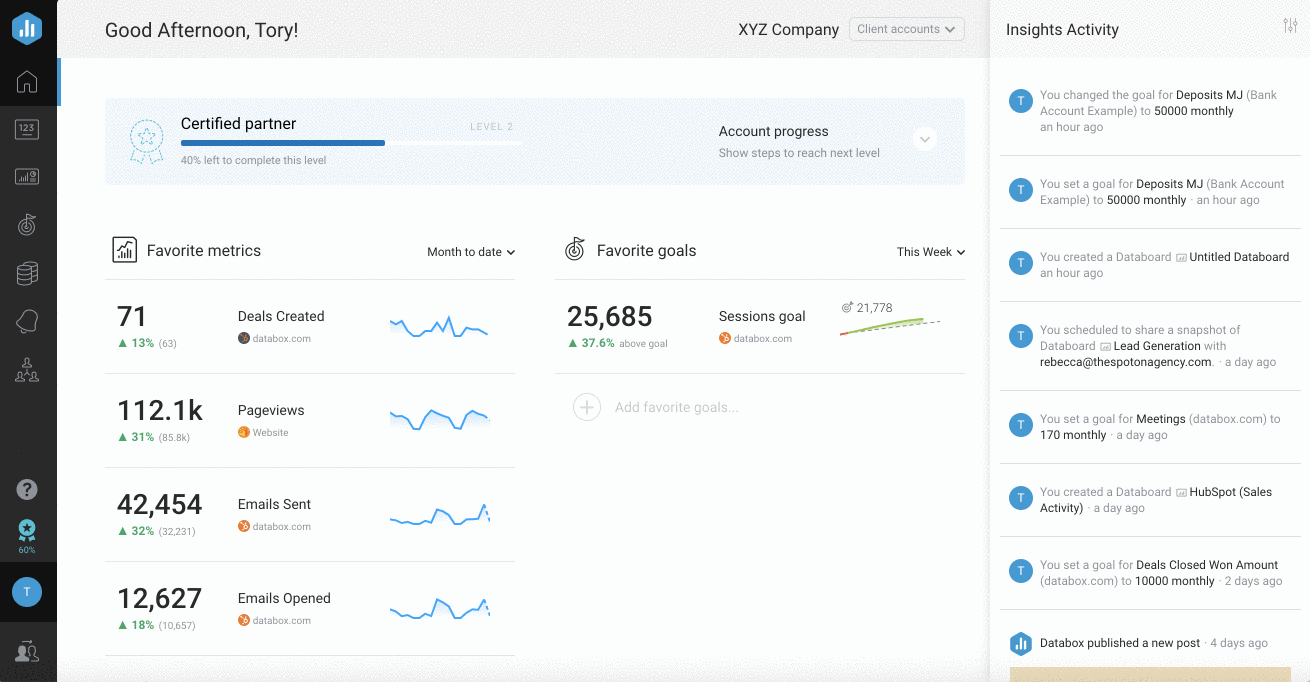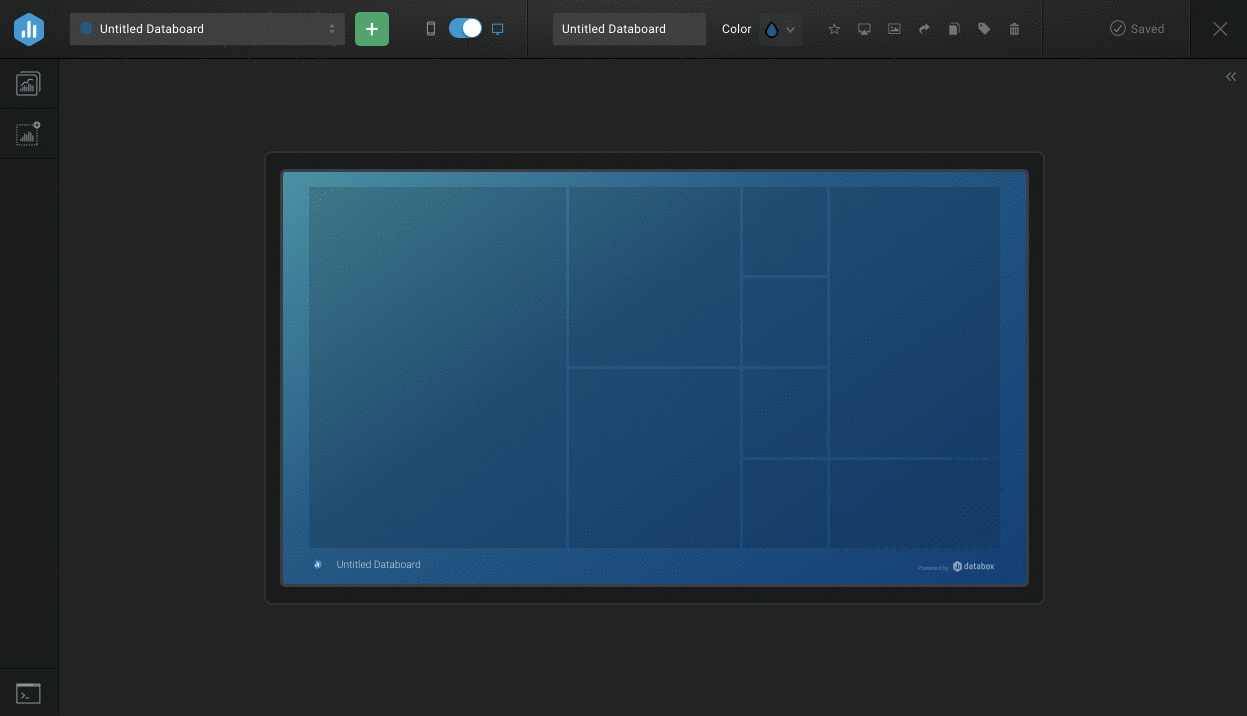Guide: Using Bitbucket with Databox
HOW TO
- Connect Bitbucket to Databox
- Access pre-built Bitbucket Templates
- Build a Databoard using Bitbucket data
How to connect Bitbucket to Databox
IN THIS SECTION
- How much historical data is synced when you first connect Bitbucket to Databox?
- What time zone does Bitbucket data sync in?
- Which Bitbucket Repositories are accessible?
How to connect Bitbucket to Databox

To connect a Bitbucket Account in Databox, go to Data Sources > + New connection. Type Bitbucket in the search bar and click on the green Connect button.
This will open the Authorization window, which is where you will be prompted to enter your Bitbucket login credentials and authorize the Databox app.
How much historical data is synced when you first connect Bitbucket to Databox?
When you connect a new Bitbucket Data Source in Databox, limited historical data is initially synced.
For more information about the amount of historical data available for a specific Metric, please contact our Support Team at help@databox.com.
Pro Tip: Once your Bitbucket Data Source is connected and actively syncing data, we store the data that's collected in our own database. This allows us to accumulate more data over time as more data syncs are made so that you can report on more historical Bitbucket data in your Databox reports. Learn more here.
What time zone does Bitbucket data sync in?
Bitbucket data is synced in UTC.
Which Bitbucket Repositories are accessible?
It is currently only possible to report on Repositories that you own. It is not currently possible to report on Team Repositories in Databox.
Further, only public Repositories are accessible. Private Repositories are not currently accessible.
How to access pre-built Bitbucket Templates

- Navigate to the Databoards > Public Templates
- In the Data Source drop-down list, select Bitbucket
- To view a preview of the Template populated with dummy data, click Preview
- To pull the Template into your Account and re-populate it with your own Bitbucket data, click Use Template
- Select the appropriate Bitbucket Data Source from the drop-down list to complete the process. The Databoard will be re-populated with data from the selected Bitbucket Account and can be found on the Databoards page
Pro Tip: Once the Databoard is available on the Databoards page, it is completely disconnected from the public Template. Therefore, you can further customize this Databoard to meet your specific needs using the Designer.
Popular Bitbucket Template
| Bitbucket | |
|---|---|
|
|
|
|
This Bitbucket Template provides you with the latest release stats like Commits, Repository status, and top contributors for any Bitbucket project.
|
How to build a Databoard using Bitbucket data
IN THIS SECTION
Popular Bitbucket Metrics
| Open Issues vs Other Issues | Time Since Last Commit | Commits |
|---|---|---|
|
|
|
|
| Open Issues by Kind | Issues by Type | Watches |
|
|
|
|
View a full list of Bitbucket Metrics available in Databox here.
How to build a Databoard using Bitbucket data

- Navigate to Databoards > + New Databoard > Start Blank
- Click on the Metric Library icon on the left-hand side of the Designer.
- Select the appropriate Bitbucket Account from the Data Source drop-down list in the Metric Library.
- View the list of pre-built Bitbucket Datablocks in the Metric Library. Drag and drop your selected Datablock onto your Databoard.
- If a pre-built Datablock isn't available for your use case, click on the Visualization Types icon under the Metric Library icon.
- View the list of Visualizations available in Databox. Drag and drop your selected Visualization onto your Databoard.
- Click on the Datablock on the Databoard to open the corresponding Datablock Editor on the right-hand side of the Designer.
- Select the appropriate Bitbucket Data Source and Metric in the right-hand Datablock Editor. This will update the Datablock, and it will populate the Datablock with the corresponding data.
- Complete steps 4-8 until your Databoard is complete.






